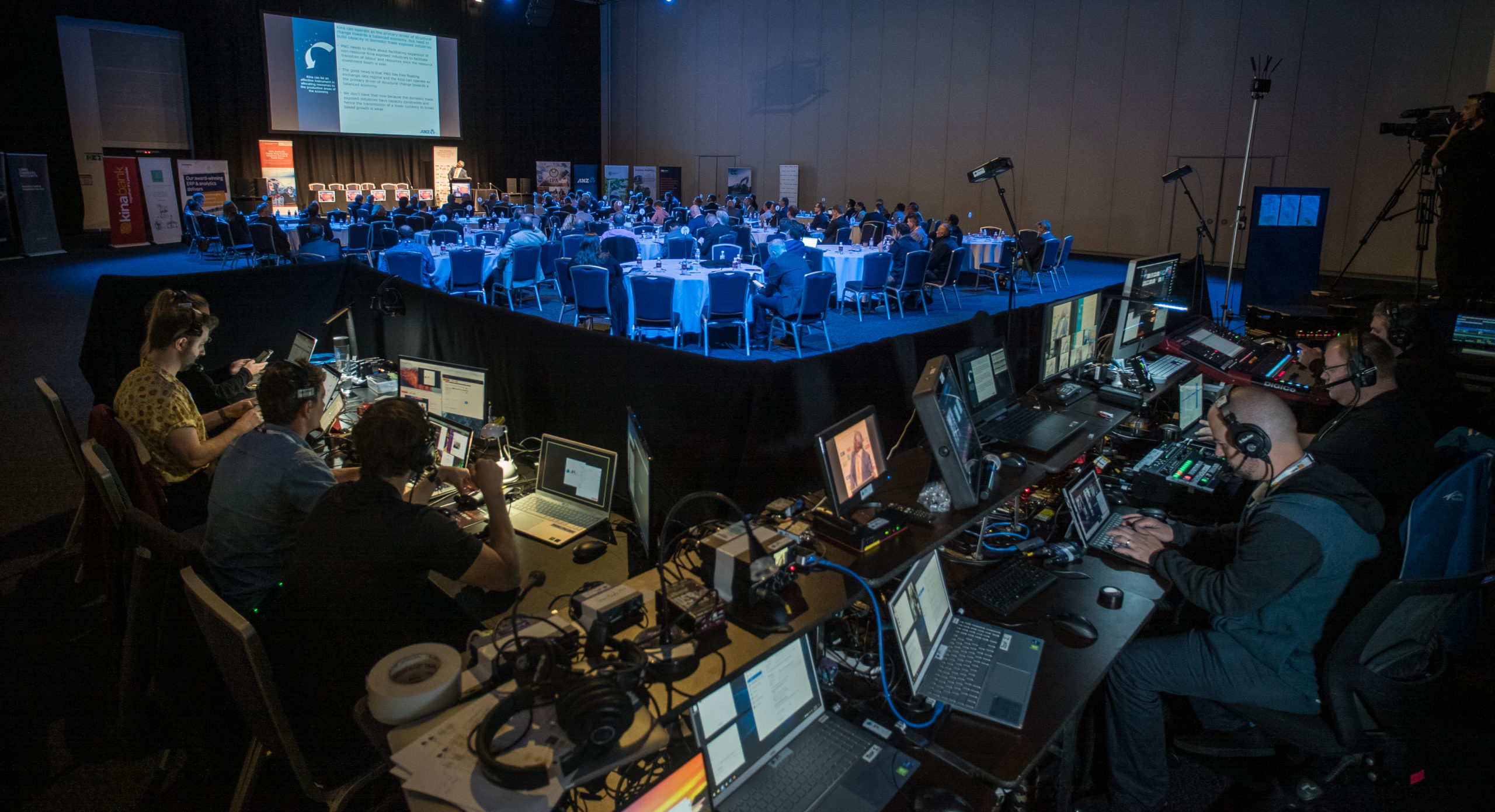Finding Streamable Content
In Part 1, we covered some basic facts about livestreaming (In case you missed it – Livestreaming 101: Basic Best Practices for Events), and we left you with some questions to help guide your decisions on how (or whether) you should incorporate livestreaming into your next event.
In Part 2, we’ll take a look at the different types of content created at most events and which types of content make compelling livestreams.
Educational Content
Corporations, associations, non-profits, universities, government institutions – they all throw events. And while these events will differ in a myriad of ways, one thing they all share is an educational component. It could be a tech user conference, where the goal is to teach users how to get the most from a new feature or to further develop their skills with the product. Educational sessions are the central purpose of most professional association events.
While there’s a lot of room for creativity in educational sessions, when it comes down to it most follow the classic classroom model. The chalkboard may now be a 16 by 9 projection screen or monitor, but the concept itself hasn’t changed much. That’s because what people expect from educational content is precisely that: education. Another thing about the classroom model is that it’s stationary. All this makes educational content a good place to start if you want to get into livestreaming – especially for organizations that award certificates, points or other incentives for participating in continuing education at their events.
Things to consider:
Session access – if you’re delivering proprietary or sensitive information in your sessions – or if you intend to charge money – then you want to make sure you’re employing a platform that allows you to limit access to your livestream.
Audience participation – one great thing about actually attending a seminar is the chance to ask questions of the experts on stage. You’ll want to extend the same opportunity to your livestream viewers. It can be as simple as announcing a Twitter #hashtag in your livestream where viewers can ask questions. Or you can select a livestream platform that supports viewer comments.
Entertainment Content
When it comes to throwing an event, few can compete with the team at Salesforce. And part of what makes Dreamforce – their flagship event – so great is their commitment to putting on a show, as evidenced by the huge bash at San Francisco’s Pier 70 at Dreamforce 2015, where the Foo Fighters, Gary Clark Jr. and The Killers performed for a packed and electric crowd.
And yes, I know what you’re thinking. There’s no way most of us can book two Grammy-winning acts, and one that’s been nominated – for our event. But that doesn’t mean we can’t put on a show.
But for events that do have live entertainment – it could be a musical performance, a comedian, a poetry slam, a fire-eater, a karaoke competition, talent show, lip sync battle, or an 8-bit video game smackdown – a livestream will allow your remote attendees to join in on the fun. Oh and by the way, our live streaming platform will let attendees participate from anywhere on the globe. Imagine that.
Things to consider:
Legal constraints – If you intend to livestream any kind of professional performance, you need to make sure to negotiate that into the performance contract ahead of time. There are also all kinds of sticky rules around broadcasting copyrighted content – and as we’re not lawyers, you should probably check with one before you start streaming your .mp3 collection on your company’s Youtube channel.
Production issues – While livestreaming is super-simple compared to traditional broadcasting, it can get really complex (and expensive) – quickly. A single, stationary camera is extremely simple to set up. As you add extra cameras and start moving them around (all good things when you want to entertain your audience) the degree of difficulty is exponential. But that shouldn’t stop you from delivering the best livestream you can. Start simple, and build up from there.
Experiential Content
This is a really fun one. And it’s an area where recent technology has created a ton of potential. Advances in video conference technology let your remote attendees participate in group sessions as if they were in the room. A wave of mobile streaming apps – like Periscope or Meerkat – let you stream from any mobile device, anywhere. Some of these apps even support GoPros. Imagine giving your remote attendees a first-hand, POV experience of exploring the event space and conversing with exhibitors in real time – as if they were there.
Things to consider:
Network access – Event spaces are not known for having great mobile service. Part of that is because there are simply too many people using their devices at the same time – a clogged network is kryptonite for mobile streaming video. If you plan to use mobile streaming at your event, you’ll want to use a stable network – like a dedicated wifi network. Make sure your venue can provide you a strong wifi signal throughout the entire event area. And if they can give you a dedicated channel – one that’s used exclusively for your livestream – that’s even better.
Social media – As opposed to streaming platforms, mobile streaming apps like Periscope and Meerkat are very much social media. And the rules of social media apply. Just as it takes a strategy and effort to build your Facebook and Twitter audience, you’ll need to begin building your mobile streaming audience well in advance of your event. It also means that you’ll have less control over who is able to access your livestream.
Sound too hard? That’s what we’re here for. Our team of professionals do this everyday, so you’ll always be in good hands.
For more information on livestreaming your event, or to get in touch to discuss your next event, click the button below.




